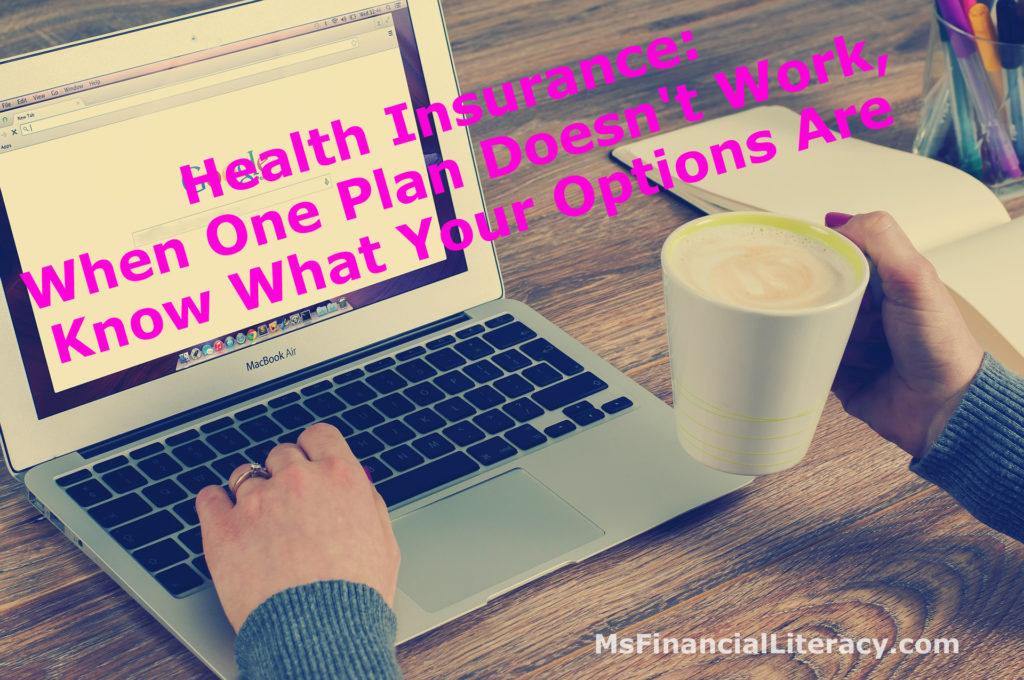This post is part of a series: Maximizing Employee Benefits to Increase Financial Security, where I encourage you to maximize your employee non-wage benefits as a way to increase financial security meanwhile protecting your financial standing. As promised, I’m devoting individual posts sharing my thoughts and experiences on the various types of benefits.
Today’s topic is health insurance plans. I’m not here to convince you which health plan or option is better. My goal is laying out the various choices I’m familiar with and sharing the lessons I’ve learned. For instance, I learned that a plan coverage with the lowest premium is not for me, despite being healthy and young. For months, I didn’t sleep well. Luckily, I didn’t have to spend thousands of dollars before I learned what my risk tolerance level is! I hope you’ll reference back to this post as you make benefits selections in the future.
My employer offers two types of plans: HMO (Health Maintenance Organizations) and PPO (Preferred Provider Organizations). Within each plan type employees can choose either the basic or buy-up option.

HMO
When I first started working I chose the HMO plan because of its lower cost. Within this type of plan, the basic option is offered to employees at no cost (with a $500 deductible and limited benefits coverage). On the other hand, the buy-up option costs employees a $32 monthly premium (with no deductible and extra benefits coverage). [#1 Lesson learned: In general, lower insurance premiums mean higher copayments and/or deductibles.] I like the HMO one-stop services business model due to its convenience. I’ve been able to go to the same building to visit my OBGYN, then take my daughter to see her pediatricians on another floor. There’re optometrists, laboratories, physical/occupational therapists, pharmacy, etc., all providing care under the same building. I also like having all my medical records at one place.
One drawback I’ve encountered thus far is that the plan limits me to a group of primary care doctors and specialists who’re affiliated with the plan. [#2 Lesson learned: Most HMOs offer limited choices of doctors.] While I’ve been happy with my primary care doctor, it wasn’t the case when I needed to see a physical therapist. At the time, there was only one PT who specialized in the care I needed (unless I was willing to drive to another city) and I wasn’t happy with the service she provided. Luckily, my exercise injury recovered quickly and I was able to say good-bye to that relationship. This limitation is definitely something I consider each year during Open Enrollment time. Another drawback of this plan is that out-of-network doctors are not covered, except in medical emergencies. If you travel a lot, this plan is probably not for you.
Basic vs. Buy-up Option
As I mentioned earlier, my HMO plan offers two options: basic and buy-up. Prior to getting pregnant, I enrolled in the basic. I was healthy and didn’t see a need for the buy-up. Once I found out I was pregnant, I switched to the buy-up option during the following Open Enrollment period. This option offered many additional benefits and coverages that aren’t available on the basic. For instance, with the basic I would have been responsible for 10% of the hospital bill for labor and delivery. With the buy-up, I paid a $500 flat fee. [#3 Lesson learned: Determine what your medical needs are the upcoming year (those you can anticipate). A cheaper plan won’t do your savings any good if it doesn’t cover the services you need.]
Then, once I went back to work after maternity leave, I reenrolled in the basic to save money. In hindsight, this was not a smart decision. During that plan year, I had an exercise injury (as aforementioned) and the PT sessions costed me over $300. Another time, I needed to see a specialist for an ultrasound scan. The cost was $265. I would’ve saved more money if I had selected the buy-up option during that plan year ($32 monthly premium x 12 months = $384 < $500 deductible). [#4 Lesson learned: A lower premium doesn’t always mean lower medical costs overall.] However, that was not all. Not only had I missed out on all the additional benefits and coverages that come with the buy-up, I was constantly worried that I might have to spend additional money on medical costs. What if I would to have a major medical emergency (remember, under the basic plan I was responsible for 10% of hospital charges). My maximum Out-of-Pocket was $3,000. [#5 Lesson learned: Pay attention to what your Out-of-Pocket Maximum is. This number is usually higher than your deductible. Typically, your plan only starts covering 100% of qualified services after the OPM is met.] When those two incidences happened there were still 10 more months left before my next Open Enrollment. And I was miserable and didn’t sleep well during those 10 months. [#6 Lesson learned: Know what your risk tolerance level is. If you can afford it, choose a plan/option that allows you to sleep well at night.] Almost every day I couldn’t wait until June to come so that I could enroll in the buy-up option.
PPO
Unlike a HMO where one needs to get a referral from a primary care doctor before seeing a specialist, being in a PPO network allows any individual to see any licensed medical provider, including specialists. And if you want to see a doctor outside the network you would have to spend extra money. Even though the premium cost is usually higher than that of HMO, this is the way to go if you value flexibility. I enrolled in a PPO when I was in graduate school. Thanks to the PPO’s flexibility, one time I was able to visit a doctor in San Francisco while traveling. At the time I lived in Austin, TX.
As for my husband, prior to moving to San Francisco he always enrolled in a PPO. He was very happy with the experience. However, that was not the case once we moved to SF (he once again selected a PPO through his new employer). He got charged for his blood laboratory work even though that was part of his annual physical (of course we repealed the charge). His doctor’s office didn’t have a lab. Then, shortly after his first visit to the doctor he received a letter from the office letting him know that the doctor moved his practice to another city far away. That was a hassle for us for several reasons. First, my husband didn’t like having to go through the same process selecting a doctor so soon again. Picking that first one was already overwhelming. There were many to pick from. Second, he didn’t like having to spend time again requesting his medical records get transferred to another facility. Third, he would need to learn to navigate a new facility that would host his new doctor.
Nowadays, my husband is enrolled in the same HMO as mine. We’ve heard many horror stories of HMOs. Luckily, ours has been pretty good thus far.
Closing Remarks
Choosing a health insurance plan that best meets your individual needs can be a long, complicated and stressful process. However, it doesn’t have to be that way. As you’re looking over your plan benefits and before making a decision, I hope your HR is there to support you whenever you feel frustrated or confused about the various technical terms, fine prints and/or numbers (such as annual deductibles, maximum lifetime deductibles, co-payments/coinsurance). Having adequate health insurance coverages for ourselves and our family members is very important. The stakes are high when we need major medical services. I hope none of us will ever be in a position where we have to spend thousands of dollars paying for medical expenses just because we didn’t spend enough time researching and/or overlooked some changes in benefits before re-enrolling.
If you haven’t already, I encourage you to set aside some time each day a couple weeks prior to your next Open Enrollment and educate yourself about your plan benefits. Educate yourself on all the options that’re available to you as an employee. If this requires you sitting in the HR office for two hours, let it be. You want to be in a position where if one plan or option doesn’t work for you, you would know exactly what action(s) to take next. If you haven’t done the education already, you would likely feel overwhelmed and might choose to do nothing. Don’t gamble with your wallet. Choosing the best health plan/option that is adequate to meet your needs is something you totally have control over.
Readers, what determinants do you use to help you select your health insurance plan?
What’s your experience been like with an HMO? a PPO?
What additional lessons would you like to share with others?
